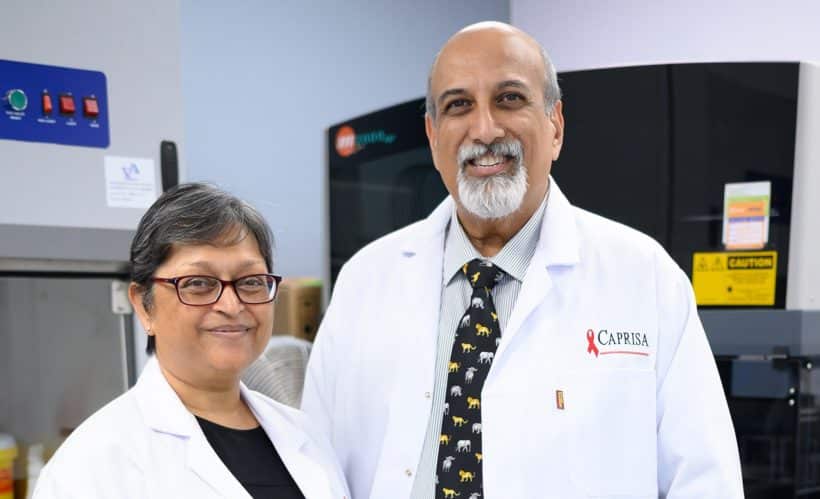
We can no longer ignore the connection between inequality and new HIV infections – Prof. Salim Abdool Karim, Director of the Center for the AIDS Program of Research in South Africa (CAPRISA)
In sub-Saharan Africa, every two minutes an adolescent girl or young woman was newly infected with HIV in 2021 alone. One young woman. Every two minutes. Think about that for a moment. The In Dangerreport should raise alarm bells for all of us.
The COVID-19 pandemic has slowed down HIV prevention and treatment in the past two-and-a-half years leading to significant impact on the control of the disease and the achievement of the 95-95-95 strategy which calls for 95% of people living with HIV to know their HIV status, 95% of people who know their status to be on antiretroviral, and 95% of all patients receiving antiretroviral therapy to be virally suppressed.
While much progress has been made over the past four decades since the first HIV cases were reported, not everyone is benefitting equally from the scientific advancements that have taken place in HIV research in recent years. Notably, this progress should not be used to justify inequalities that still persist in HIV testing and treatment, even more so for the introduction of new technologies. The upcoming 2nd International Conference on Public Health in Africa (CPHIA 2022) December 13-15 in Kigali, Rwanda will shine the spotlight on this connection and the urgent need to focus on HIV response alongside Tuberculosis (TB), malaria and other neglected tropical diseases (NTDs).
Reducing stigma and discrimination, and increasing access to justice are critical in the global response to HIV. By combining resources and strengths to support vulnerable communities at a higher risk of exposure to HIV – such as migrants and prisoners, people who use drugs, LGBTI people, sex workers, teenagers, young people, women and children, we can work together to address the range of challenges they face and in so doing, ensure they have timely access to essential HIV care and support.
Identifying and involving these vulnerable communities lie at the heart of an effective action plan. These groups bring invaluable knowledge of the specific obstacles they face, and the potential – and sustainable – solutions to affect real long-term change. Partnerships between community-based organisations and academic institutions can provide the evidence to inform policy, programs and services to better respond to the unique realities and needs of communities, particularly the most marginalised. Such partnerships are fundamental to creating lasting health change in Africa.
From the COVID-19 response, we have learned the importance of supporting scientific innovation and promoting cutting-edge medical technologies, and making them available to people in all countries throughout the world in an affordable and timely manner. Similarly, African-led convenings, such as CPHIA 2022, will offer opportunities for researchers and public health leaders share knowledge, and strengthen scientific collaboration and innovation to reinforce stronger primary health care systems and create a conducive environment capable of responding to diseases—such as HIV —that continue to disproportionately affect vulnerable communities.
The political declaration adopted by United Nations Member States in 2021 to end inequality and get on track to end AIDS by 2030 is a clear indication that there is genuine eagerness – and action – toward reducing new HIV infection. Reaching this goal will require an integrated and holistic approach by all players to create mutually beneficial partnerships; those that seek to combine the different strengths of diverse partners to convert big ideas into bigger, impactful outcomes.
Therefore, it is important to learn from the pandemic and leverage cross-border and cross-sectoral collaborations with speed and accuracy when these challenges threaten our lives and economic well-being.
We owe it to the next generation to do better. We owe it to them to break the cycle of economic, social, cultural and legal inequalities and ensure an AIDS-free generation with zero new HIV infections, zero discrimination and zero AIDS-related deaths. The goal is ambitious but achievable and vital in ending AIDS as a global health threat.
As we commemorate the 34th anniversary of World AIDS Day today (1 December) under the theme “Equalize”, I join hands with other public health leaders in every sphere and at every level in committing providing actionable solutions to the barriers that keep us from making progress and helping to end AIDS.

